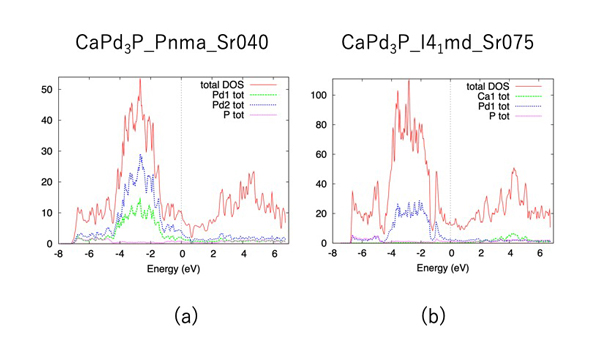PC3-5
Electronic Structure of novel Superconductor (Ca,Sr)Pd3P
Dec.1 16:15-16:30 (Tokyo Time)
National Institute of Advanced Industrial Science and Technology (AIST)1
IMRA Material R&D Co. Ltd.2
Recently found superconductor (Ca1-xSrx)Pd3P has an interesting structural phase transition [1]. It has an antiperovskite structure in all regions of Sr concentration x, but has inversion symmetry in the region where x is small and no inversion symmetry in the region where x is large. Its Tc is large in the former (~3.5 K at x=0.4) and small in the latter (~0.7 K at x=0.75). The lack of inversion symmetry in antiperovskite superconductor reminds us the pioneer work for CePt3P by Bauer et al [2]. On the other hand, the lack of inversion symmetry may not so important in other anti-perovskite-related superconductors Li2Pd3P and Mg1.9Rh3P [3-5].
In this paper we report the results of the first-principles calculations for CaPd3P, using the experimental crystal structure of (Ca0.6Sr0.4)Pd3P and (Ca0.25Sr0.75)Pd3P. We found that the density of states at the Fermi level per CaPd3P (=D(EF)) is large (=2.65 eV-1) in the former and small (=1.35 eV-1) in the latter.
Moreover, the electronic specific heat calculated from D(EF) well agrees with the experimental result [1]. This result strongly suggests that the large change of Tc is mainly caused by the large change of D(EF).
[1] A. Iyo et al. in preparation.
[2] E. Bauer et al. Phys. Rev. Lett. 92 (2004) 027003.
[3] K. Togano et al. Phys. Rev. Lett. 93 (2004) 247004.
[4] A. Iyo et al. Phys. Rev. Mater. 3 (2019) 124802.
[5] I. Hase et al. J. Phys.: Conf. Ser. 1293 (2019) 012028.
Fig. Density of states curves of CaPd3P with the crystal structure of (a) (Ca0.6Sr0.4)Pd3P and (b) (Ca0.25Sr0.75)Pd3P. Unit of the vertical axis is eV-1 for the corresponding unit cell.
Keywords: (Ca,Sr)Pd3P, band structure calculation, superconductivity, structural phase transition
